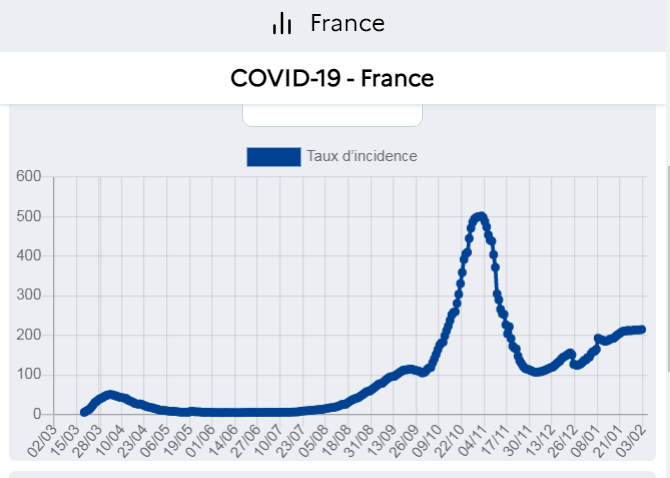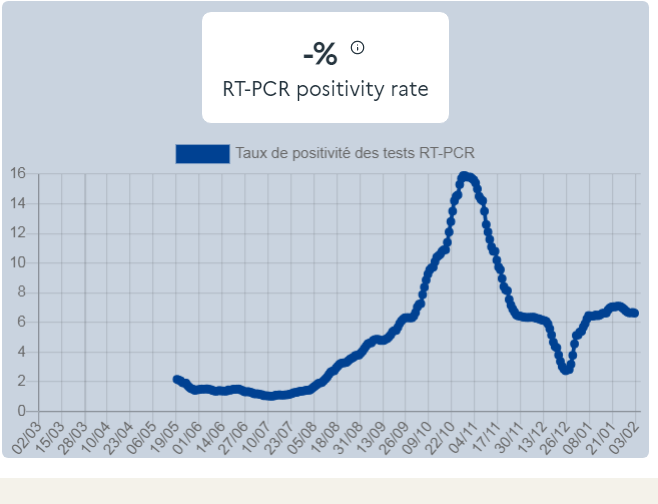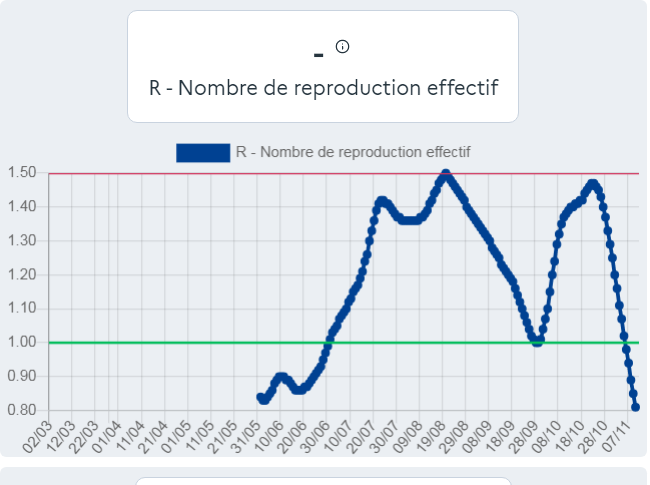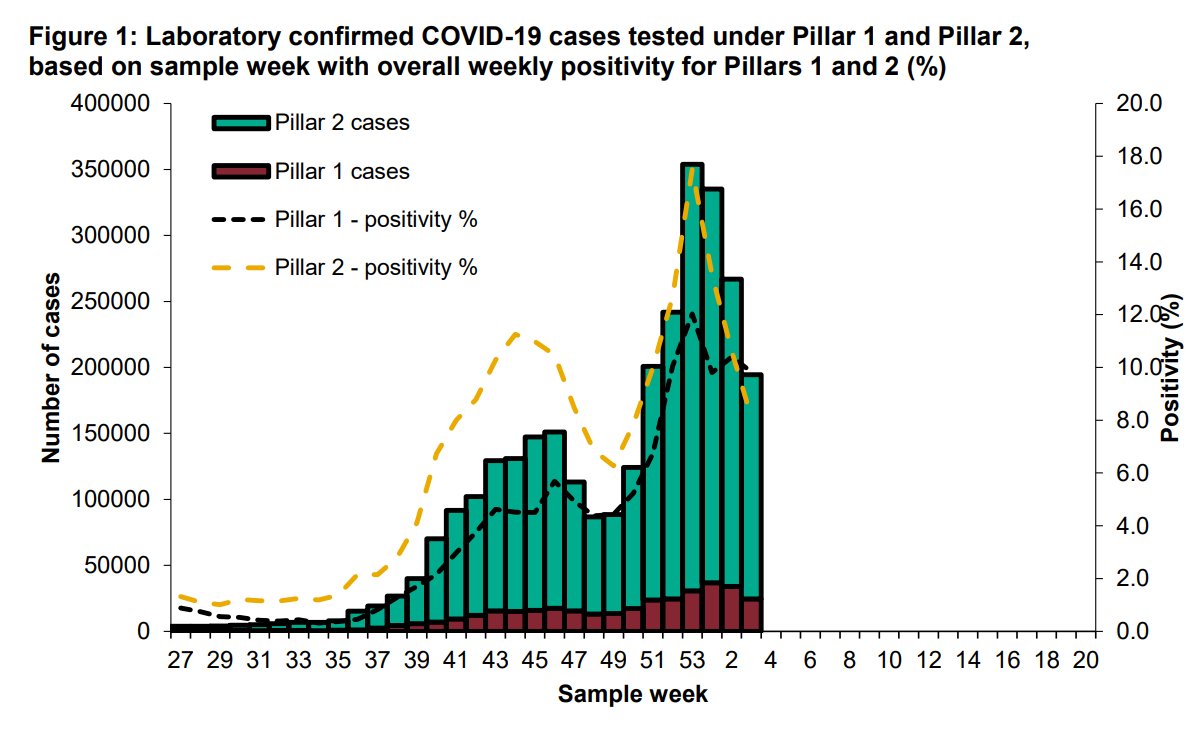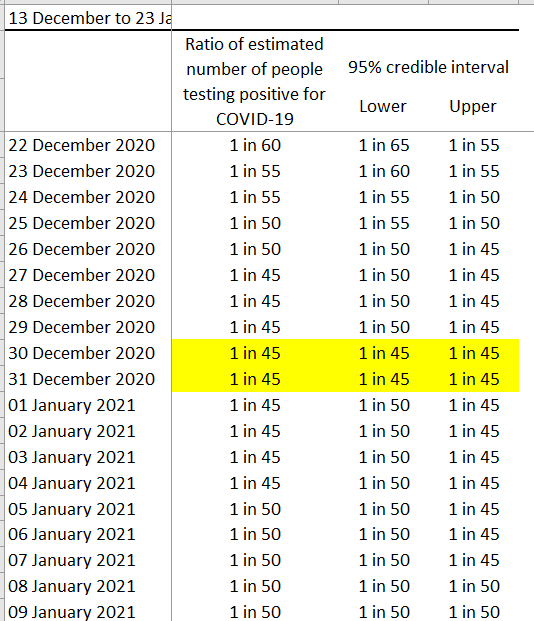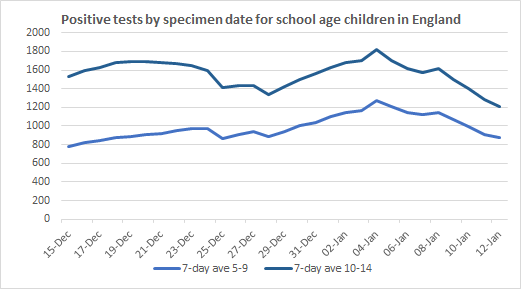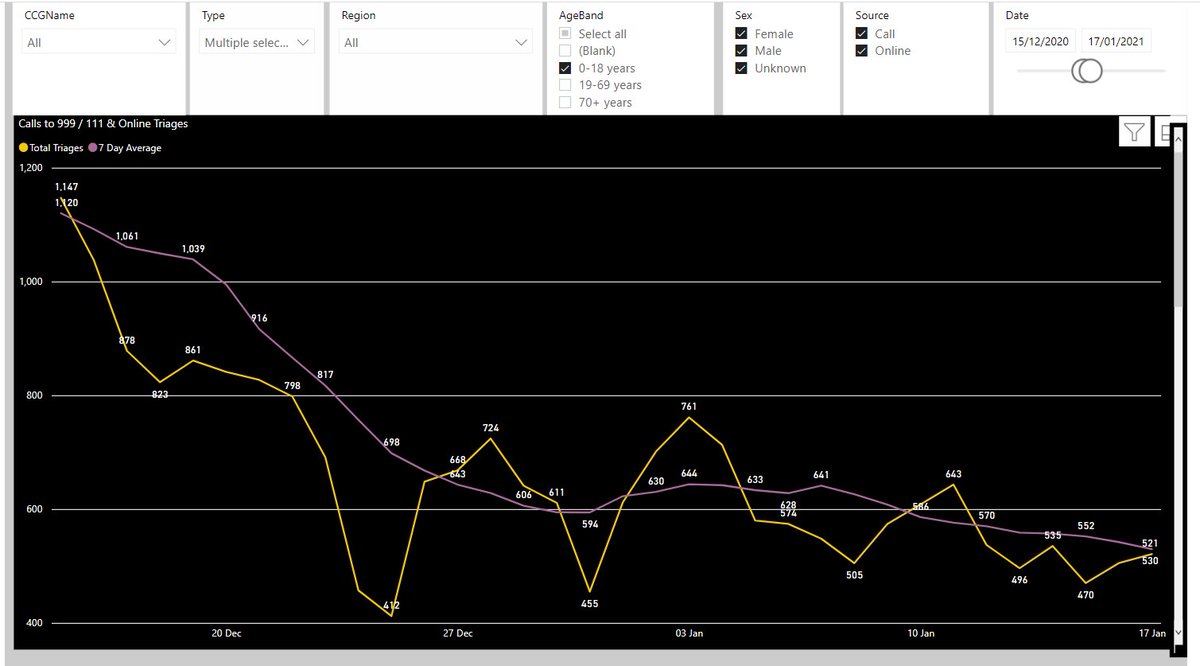
One reason I am sceptical about impact of Tier 3&4 is decline in infections from end-Dec is part of the normal longer run trend we see v. often: when cases rise, rate of growth increases, then declines & eventually goes negative. A bit like R declining but still > 1 for a while.
https://twitter.com/cricketwyvern/status/1357281871688835072
Here is rate of growth for Zoe estimates for England.
Growth rate turns -ve (i.e. estimated infections start to fall) on data from 3 Jan (implying infections falling perhaps 5-6 days earlier). But growth rate started falling from 16 Dec, i.e. before school hols or Tier 4.
Growth rate turns -ve (i.e. estimated infections start to fall) on data from 3 Jan (implying infections falling perhaps 5-6 days earlier). But growth rate started falling from 16 Dec, i.e. before school hols or Tier 4.

V. little sign of tier changes/lockdown accelerating the trend. In fact, the inflection point around 23-28th Dec happens just when effect of school holidays/T3 then T4 in London/SE/E might have kicked in. Similarly, no sign of any accelerating of trend after lockdown.
Regional effects might be hiding things, so here is the trend in the growth rate for the worst hit region, London.
Infections start falling from 30 Dec so too late for T3/T4/school holidays to be the trigger, whilst growth rate starts falling from 17th too early for even T3.
Infections start falling from 30 Dec so too late for T3/T4/school holidays to be the trigger, whilst growth rate starts falling from 17th too early for even T3.

Most that can be said is that the London growth rate does fall more quickly from about the 20th which could possibly be attributed to T3 change on 16th. No sign of any T4 impact.
For comparison, here is Yorkshire: growth rate peaks later than London (27 Dec) & falls steadily from 30 Dec, too early for 31 Dec tier changes to be the trigger. Growth rate turns –ve (i.e. infections fall) on 4 Jan but this is a continuation of the earlier trend in growth rate. 

Note, Yorkshire region was never in Tier 4. It was a mix of Tier 2 & Tier 3 up to 31st Dec and all in Tier 3 from then until national LD.
BTW I’ve used the Zoe data as it is less affected by Christmas testing/reporting anomalies than is the PHE case data, but the latter tells a fairly similar story.
Data source is here: console.cloud.google.com/storage/browse…
Data source is here: console.cloud.google.com/storage/browse…
• • •
Missing some Tweet in this thread? You can try to
force a refresh

